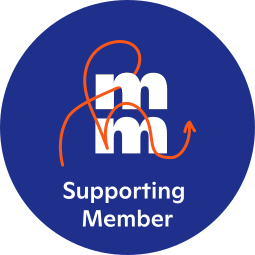ADHD, or Attention Deficit Hyperactivity Disorder, affects people in many ways, because of this it is clear that personalized strategies are key to managing the negative impacts of ADHD in our lives. In this article, we’ll delve into practical techniques that can help you harness your strengths and conquer the challenges that ADHD might present. The journey to managing ADHD is unique for each person and the tools may vary from day to day, but I believe that with the right tools and mindset, you can lead a successful and balanced life.
I was diagnosed with ADHD (inattentive type) when I was 19 and this helped me think about my mind and how I focused a little differently. It took a while, but I found many tools, tips, and tricks to help me succeed. I’ve also had the privilege of working with many ADHD minded folks to help them find the methods that work for them. Here are a few things I’ve learned.
Understanding ADHD:
ADHD is more than just difficulty focusing; it’s a complex neurological condition that influences attention, impulsivity, sensitivity, and hyperactivity. It can influence information processing and sensory overload. It can even have an effect on relationships and self-advocacy through rejection sensitivity dysphoria (RSD).
Attention “deficit” is actually a misnomer. It’s more that we have difficulty filtering out all the stimuli (e.g. sights, smells, sounds, thoughts, etc.) and end up being aware of too many things at once. This overwhelms the brain and makes it hard to stay on one topic long enough to learn, form memories, or do deeper thinking. Understanding the natural challenges that our brain brings can help us support those deficits, but we can also get a better idea of the inherent strengths that come from this fast moving brain.
Just like many things in life, we experience these symptoms on a bit of a spectrum. The intensity of the symptoms may vary depending on our genetics, physical health, daily life habits, daily stressors, relationship stressors, etc. Understanding how it shows up for you in this moment is key to learning how to work with your mind. You need to see what you are working with before you can fix it.
My Approach: Practical Mindfulness and Person-Centered Therapy
In my practice, I’ve found that combining practical mindfulness and person-centered therapy can be incredibly effective in managing ADHD.
1. Practical Mindfulness for ADHD
Mindfulness isn’t about doing yoga, sitting cross-legged, or emptying your mind. It’s about being present in the moment, being engaged with your life, and knowing which thoughts to follow. There are many types of meditation with different goals. The most common form that most people think of is silent sitting where we learn to sit with a chosen focus (counting breath, noticing body sensations, etc…) while practicing to let go of the thoughts that lead us astray. This practice can be applied to many situations and works wonders for individuals with ADHD.
Mindful Thinking: Train your mind to focus on the task at hand. When your thoughts wander, notice that you’ve been distracted, and gently guide your thoughts back to the thing you are focusing on. It’s not a problem if we get distracted a lot. The real benefit here is getting better at noticing when we’ve been distracted and redirecting our focus where we want it. Over time, this can enhance your attention span. Like anything, this takes time to get good at. It is a practice that we never stop doing.
One Thing at a Time: Multitasking can be overwhelming for anyone, but especially for those of us with ADHD. We have a finite amount of energy we can use for focus. When we divide it amongst multiple things, we have less brain energy available for each thing. Don’t forget that we are also using part of our brain energy to maintain focus and catch ourselves when we are distracted. So even when we are focusing on one thing, us ADHD brained folks are multitasking!
Mindful Breathing: When the whirlwind of thoughts feels overwhelming, turn to your breath. Intentional belly breathing can provide a moment of calm amidst the chaos. We naturally breathe differently in different situations. This is an indication of the body’s natural intelligence. Breathing into the belly activates the “rest and digest” mode of thinking. Shallow breathing into the chest increases the amount of oxygen in our blood stream and helps with the quick bursts of energy needed for fight or flight when stressed. The problem is that when we feel stressed all the time, we will unconsciously have shallow breaths all the time. When we don’t use our muscles by “running or fighting” there is an imbalance of oxygen and carbon dioxide that can cause anxiety like symptoms which will make it harder to focus.
2. Person-Centered Therapy for ADHD
Imagine a therapy approach that sees you as a unique individual, not just a set of symptoms. That’s person-centered therapy. Here’s how it helps manage ADHD:
Empathy and Acceptance: In our sessions, I create a safe space where you can be yourself, ADHD quirks and all. It’s about embracing who you are and building self-acceptance. When we see ourselves as we are, we know what we are working with and we can give ourselves what we need. As Carl Rogers said, “When we accept ourselves as we are, then we can change.”
Collaborative Goal Setting: Together, we set realistic goals that utilize your strengths. It’s not about conforming to a rigid norm but about progressing at your own pace. Sometimes our initial idea of how things are supposed to go changes as we get more information. It’s ok to make mistakes, but not ok to give up.
Unearthing Strengths: We all come with our own set of strengths. The quick mind that is associated with ADHD may be easily distractible when untamed, but it also has some inherent strengths—creativity, hyperfocus, and a unique perspective on the world. Here is a great questionnaire to help you find out what your strengths are, www.viacharacter.org. When we identify your strengths and see how you are already using them we can learn how to harness your particular strengths.
Navigating the ADHD Roller Coaster
Living with ADHD can be like riding a roller coaster—thrilling, challenging, and occasionally a bit bumpy with maybe a little motion sickness. But remember, you’re not alone on this ride. Let’s explore some practical strategies to keep the roller coaster on track:
1. Planner Palooza – Structure for responsibilities during the week
Planners are your best friends. Use them to map out tasks, set reminders, and create a sense of structure. Remember, it’s not about being perfect; it’s about progress. There are many planners with many different methods. If they haven’t worked for you before, it doesn’t mean planners don’t work for you.
2. The Pomodoro Technique – Structure for focus time
Attention span wavering? Try the Pomodoro Technique. Set a timer for 25 minutes, fully engage in a task, and then reward yourself with a 5-minute break. Rinse and repeat. During this break do some body movement and relax your mind. Don’t try to focus, you are resting that muscle. It’s ok to let your mind wander.
3. Dance with Dopamine – Self-care and state of mind
Exercise isn’t just for physical health; it’s a dopamine dance for your brain. Engage in regular physical activity to boost focus and mood. This also helps to get out “nervous energy” that might distract us.
4. Tech Talk – Use only the tools needed
Technology can be a double-edged sword. Use apps designed for focus, organization, and time management. But also remember to unplug and embrace the analog world. Put the distracting technology in a hard to reach place e.g. another room, in your car, on your roof. This will help lessen the moments when our quick thumbs get us on social media before we realize what is happening.
Finding Your Support Squad
Managing ADHD is much easier with a support squad by your side. Let’s explore some avenues where you can seek support:
Therapy: Of course, therapy is my top recommendation. A therapist can provide personalized strategies, a listening ear, and a nonjudgmental space to explore your thoughts and feelings.
Support Groups: Connecting with others who understand your journey can be incredibly empowering. Consider joining ADHD support groups, either in-person or online.
Work/Study Buddies: Having designated focus time with a partner also focused on productivity can be very motivating and helpful. Set guidelines and break times along with the reward of some quality time together after the agreed upon work period.
Educational Resources: Knowledge is power. Dive into books, podcasts, and reputable websites to learn more about ADHD and how to navigate its challenges.
Embracing Your ADHD Journey
Life with ADHD isn’t a straight path—it’s a winding adventure filled with surprises. Everyday we need to work at it, be compassionate towards ourselves, and do our best. Embrace your journey, celebrate your victories (no matter how small), and remember that you’re more than your diagnosis. You’re a unique individual with incredible potential.
Let’s Connect!
If you’re ready to embark on a journey of self-discovery and growth, I’d be happy to work with you. As a therapist specializing in ADHD, Anxiety, ASD, Depression, and more, I’m dedicated to helping you thrive. [Schedule a session] with me today.
Remember, you’re never alone on this path. Keep working to find the right community and the right tools that help you. Reach out and let me know how I can help.
-Rob
Follow me here on LinkedIn for more insights and inspiration.








